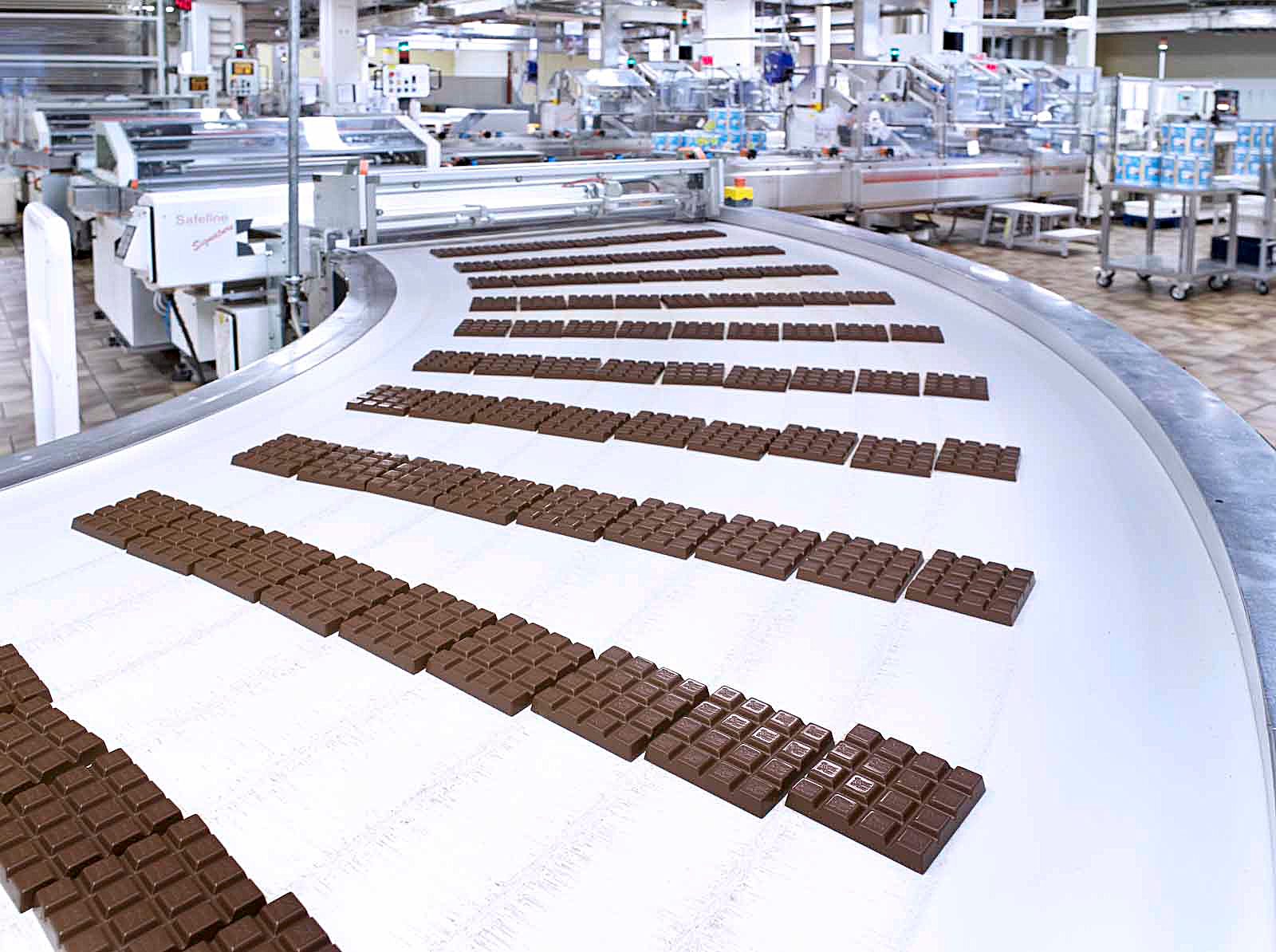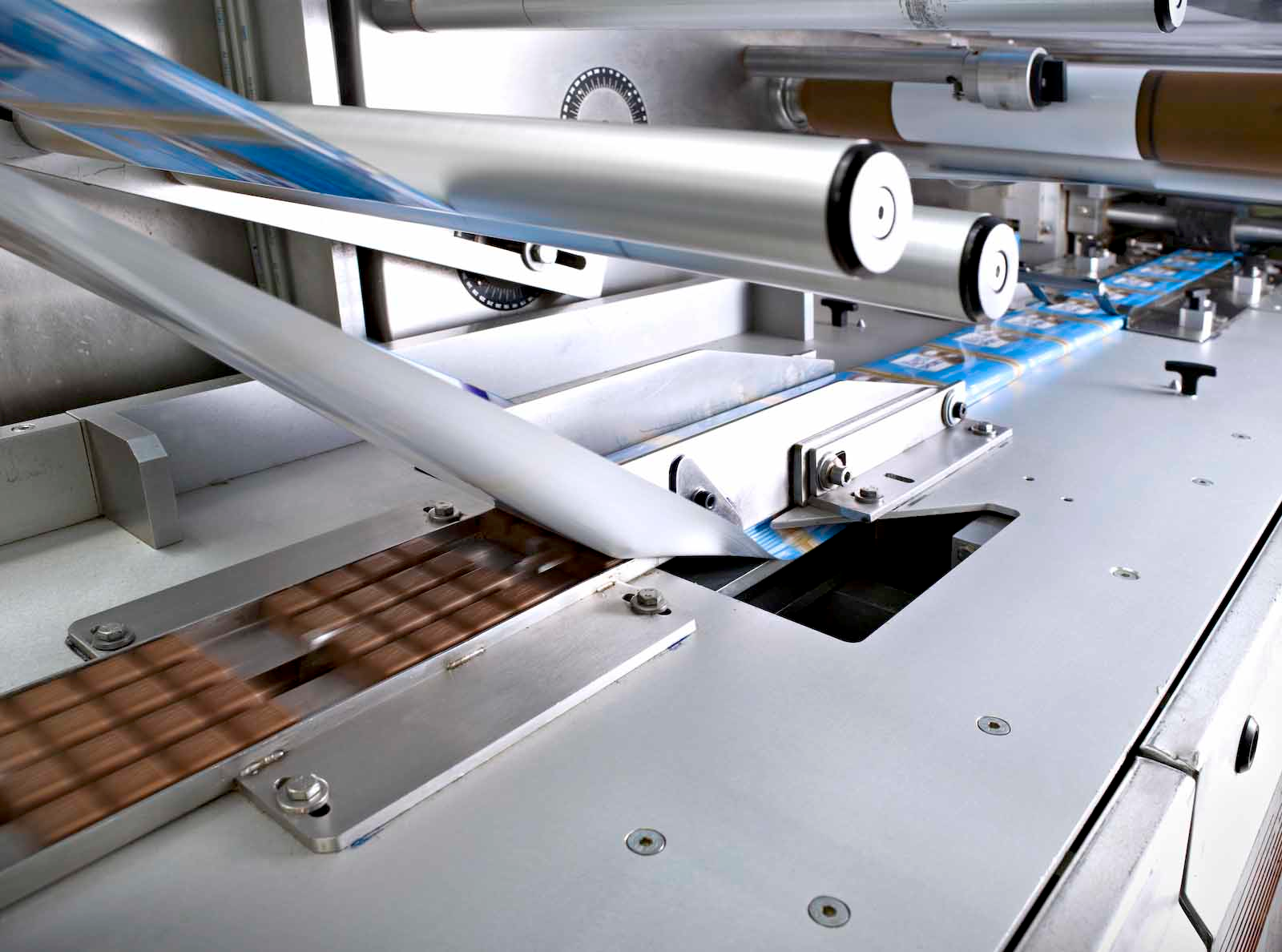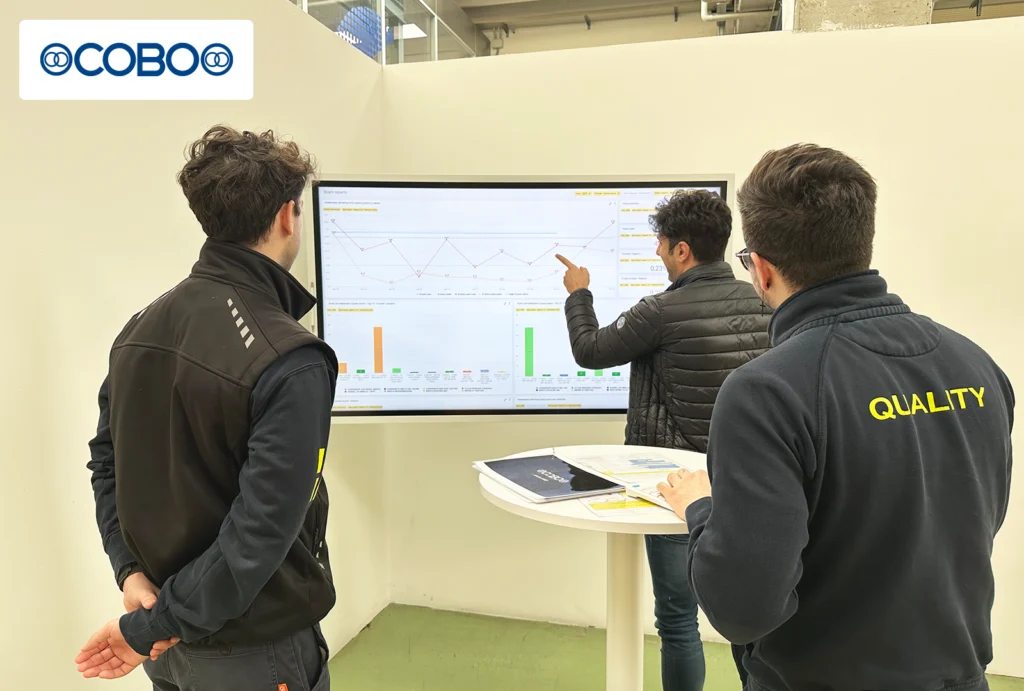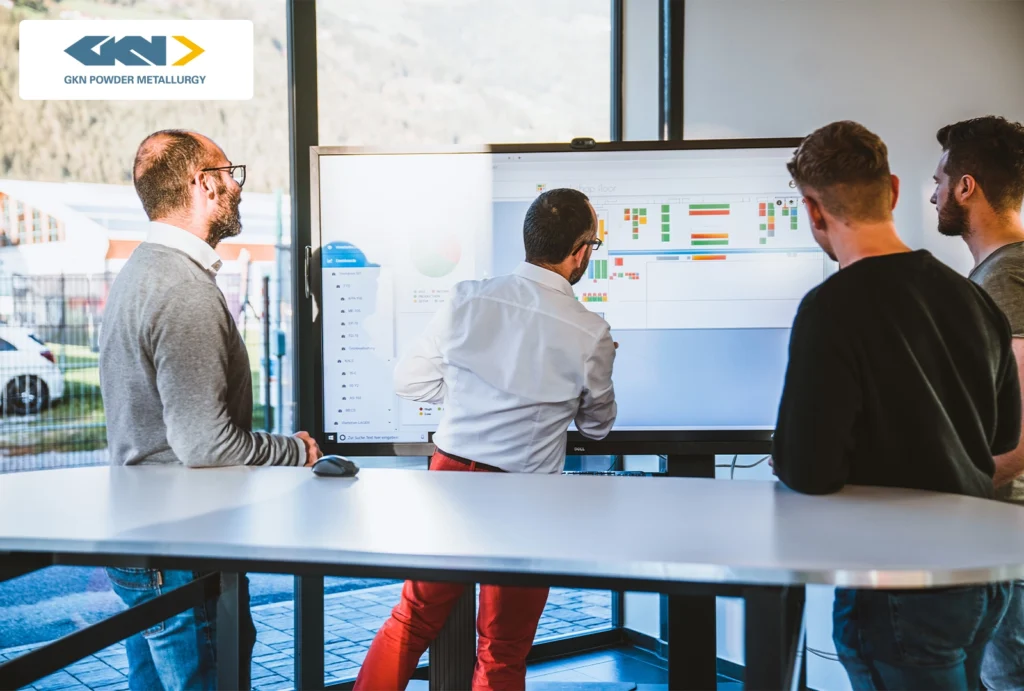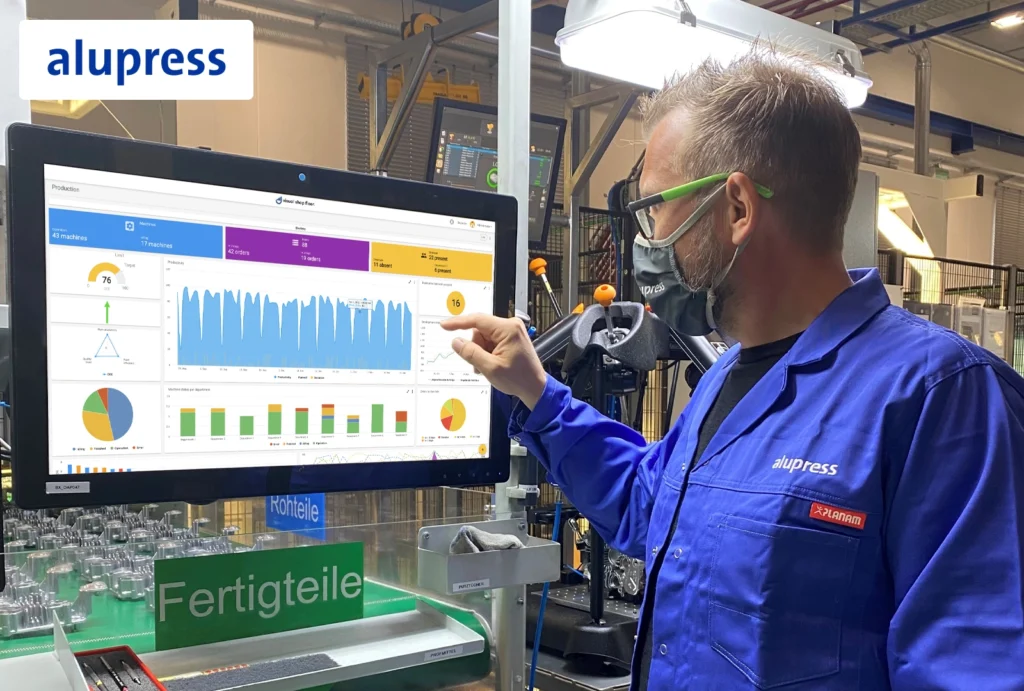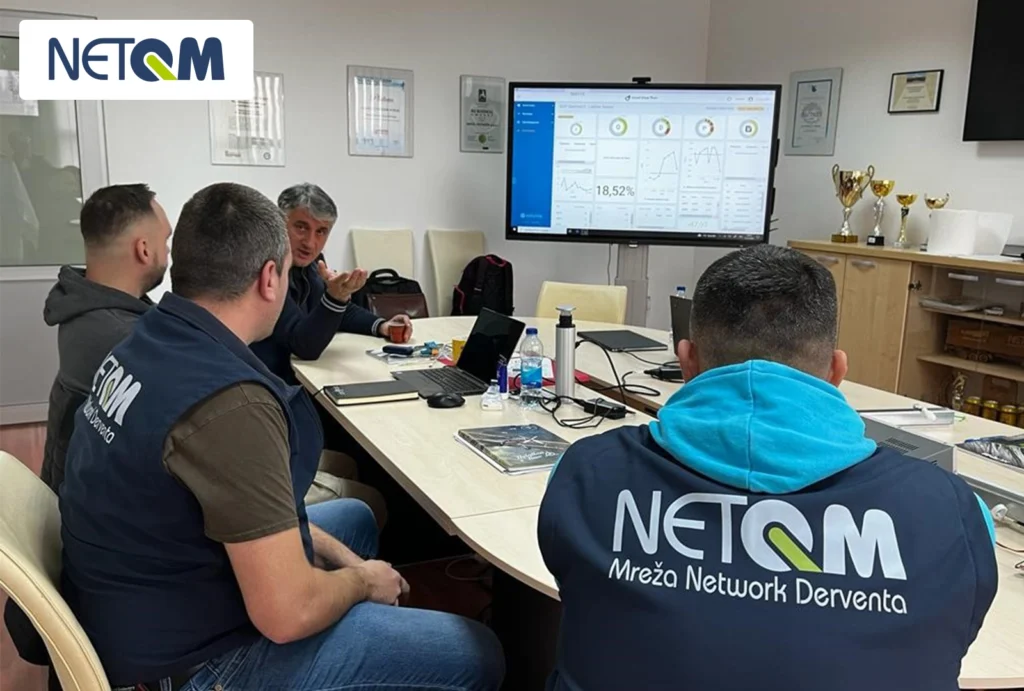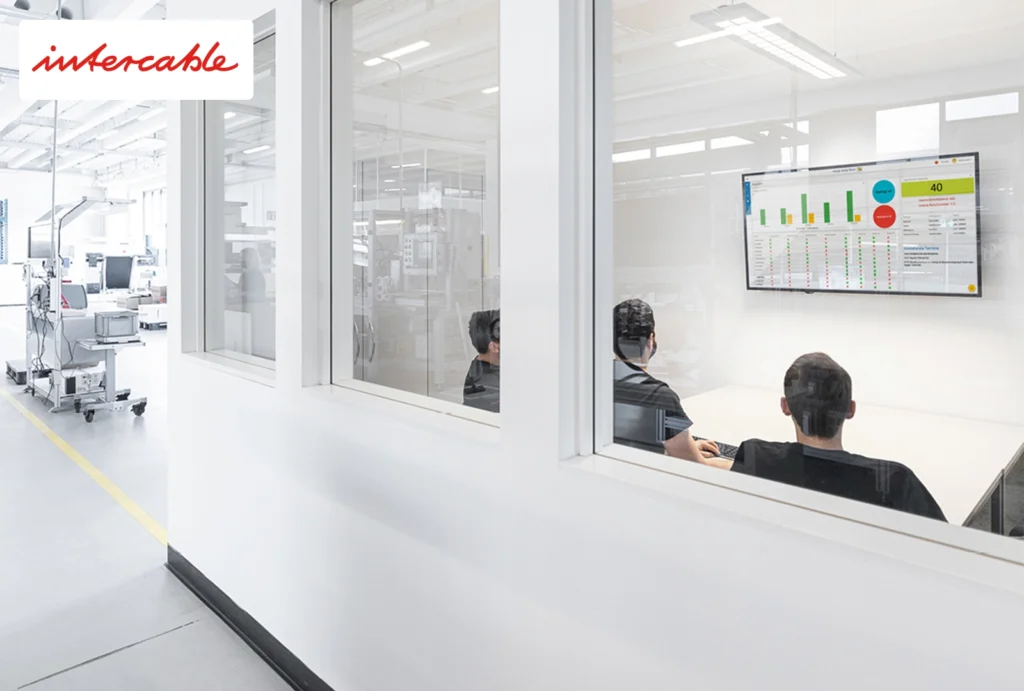As a manufacturer of premium chocolate, Ritter Sport uses Visual Shop Floor to create transparency in shop floor management and to efficiently control processes. The solution supports cross-departmental collaboration, automates recurring tasks, and enables structured tracking of actions. This makes continuous improvement measurable and sustainably promoted in day-to-day operations.
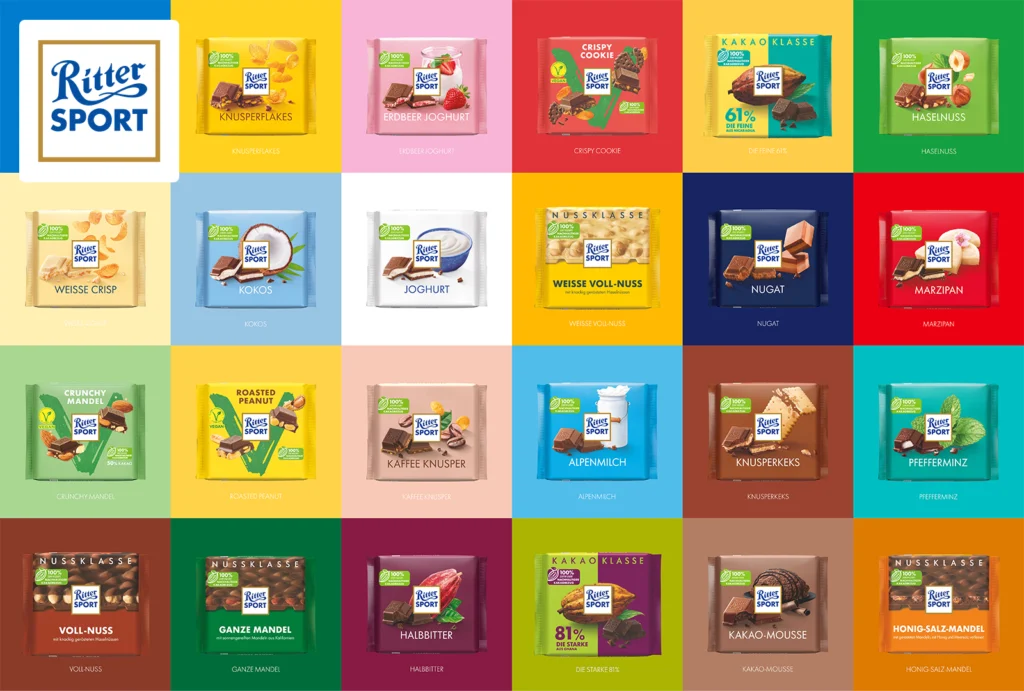
The colorful variety – Ritter Sport
Alfred Ritter GmbH & Co. KG is a family-owned company with a long-standing tradition, headquartered in Waldenbuch near Stuttgart. It is internationally known for its iconic square-shaped chocolate, Ritter Sport. Since its founding in 1912, the company has stood for quality, innovation, and sustainability – from the selection of raw materials to production.
Today, Ritter Sport employs around 1,900 people and generated sales of €605 million in 2024. In Germany, 99% of consumers are familiar with the brand, whose products are available in over 100 countries worldwide.
Today, Ritter Sport employs around 1,900 people and generated sales of €605 million in 2024. In Germany, 99% of consumers are familiar with the brand, whose products are available in over 100 countries worldwide.
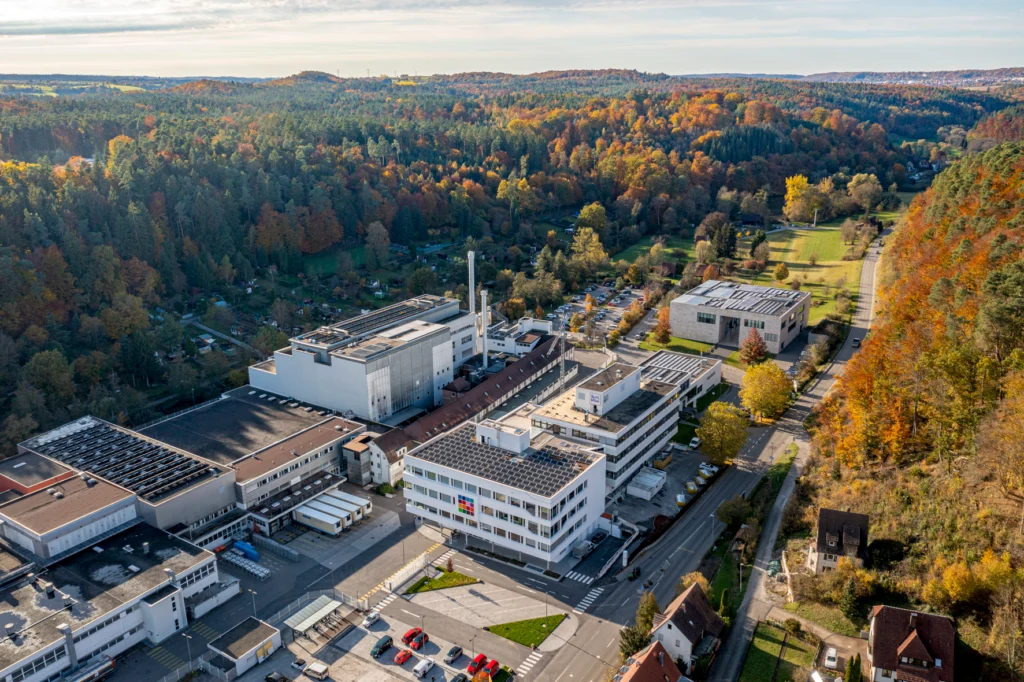
Ritter Sport, headquarter Waldenbuch, Germany
Challenge
Before implementing Visual Shop Floor, Ritter Sport faced the following challenges:
- Information flows and documentation processes were partly fragmented and handled manually, leading to increased effort and occasional inconsistencies.
- Cross-departmental transparency was limited, making it difficult to maintain a comprehensive overview of processes and responsibilities.
- The tracking of actions was not fully systematized, which sometimes resulted in delays in implementation.
- Sustainable problem-solving and active employee involvement still had room for improvement – particularly with regard to continuous improvement processes.
Solution
With the introduction of Visual Shop Floor, key processes were purposefully improved and harmonized across departments:
- Visual Shop Floor was implemented in all core production areas, enabling a consistent and unified way of working.
- Individual use cases were mapped flexibly, taking established workflows into account. The solution was seamlessly adapted to existing processes and tailored to the needs of specific user groups.
- Events were systematically recorded and directly linked to corresponding actions, significantly improving both response time and traceability.
- Audit processes were conducted digitally and tracked in a structured manner, ensuring transparent and audit-compliant execution.
- Shop floor meetings were structured and data-driven, strengthening team communication, increasing efficiency, and supporting continuous improvement.
Result
With the introduction of Visual Shop Floor, key processes were purposefully improved and harmonized across departments:
- Team leaders benefit from more than a 10% reduction in time spent on administrative tasks, allowing greater focus on operational leadership and coaching.
- Tasks and actions can be tracked transparently in real time, making responsibilities clear and progress easy to monitor at any time.
- Shift handovers are structured and traceable, ensuring clear communication and a smooth flow of information.
- Critical events trigger automated workflows, enabling faster response times and early risk mitigation.
Where quality and hygiene matter, information must not be missing
As a manufacturer of premium chocolate, Ritter Sport is committed to the highest standards of hygiene and quality. To ensure these standards are consistently met, clearly structured processes and seamless documentation are essential.
Before the introduction of Visual Shop Floor, information related to audits, walkthroughs, or quality incidents was collected and shared through various channels such as email, phone calls, Excel sheets, or Kanban tools. This approach had developed over time and worked in principle, but it required significant coordination effort and made centralized tracking difficult.
These challenges led to a clear need for a unified software platform – with the goal of increasing transparency in ongoing processes, reducing or automating manual and repetitive tasks, and significantly improving communication on the shop floor.
Traditional Shop Floor Management – everyday challenges
Since 2012, Ritter Sport has been using a Manufacturing Execution System (MES) to collect machine and operational data. In daily Shop Floor Management, this system supports the analysis of the previous 24 hours in terms of equipment status, production volumes, scrap, and performance – essentially focusing on OEE and its influencing factors. Evaluations were conducted centrally via a single screen per area.
In addition, safety-related incidents, quality deviations, and customer complaints were documented manually on DIN A3 paper sheets. Problem-solving actions were recorded by teams in handwriting on large-format “Gemba boards.”
This hybrid, partly paper-based approach proved effective over many years, but it increasingly posed challenges with regard to digital traceability, documentation of corrective actions, and cross-functional collaboration – especially in the context of sustainable problem-solving and involving employees across shifts and functions.
The introduction of a digital solution not only resulted in a noticeable increase in efficiency but also laid the foundation for centralized and transparent documentation. All stakeholders now have real-time access to up-to-date information – across roles and departments.
The resulting transparency extends well beyond the shop floor: even employees who are not directly involved in production processes gain insight into ongoing activities and their context. As a result, workflows become more understandable, priorities are clearly identifiable, and decisions are made on a more informed basis – fully aligned with the demands of an efficient, modern production environment as required in today’s food industry.
When Excel and whiteboards reach their limits – a tailored, modular solution
To meet the growing demands of Shop Floor Management and design processes to be both efficient and future-ready, Ritter Sport chose to implement Visual Shop Floor.
Thanks to its modular structure and consistently applied low-code / no-code approach, more than 80% of the requirements were covered straight “out of the box.” Since its initial rollout, the system has been continuously developed to incorporate new use cases and gradually expanded across two sites.
Today, Visual Shop Floor is used not only in production and logistics, but also in areas such as engineering, maintenance, quality assurance, occupational safety, and even corporate health management.
For Maximilian Weber, Operational Excellence Engineer at Ritter Sport, the true value lies in its adaptability: “I see Visual Shop Floor as a tool for digital enablers. With the right know-how, nearly any use case can be implemented.”
In daily operations, Visual Shop Floor supports numerous workflows – from the automatic detection of machine downtimes and direct linkage to corrective actions, to cross-site task management. Information and key performance indicators are visualized clearly on dynamic info boards. In addition, audits are conducted digitally, deviations are automatically converted into tasks, and structured Shop Floor Meetings are digitally facilitated. As a result, Shop Floor Management at Ritter Sport has become more transparent, more efficient, and sustainably effective.
I see Visual Shop Floor as a tool for digital enablers. With the right know-how, nearly any use case can be realized.”
Maximilian Weber,
Operational Excellence Engineer, Ritter Sport
More transparency, less effort – how Ritter Sport benefits from digital Shop Floor Management
Maximilian Weber summarizes the impact of Visual Shop Floor at Ritter Sport perfectly: “By implementing Visual Shop Floor, we were not only able to significantly reduce the documentation effort, but also create a new level of transparency across all departments.”
Today, employees benefit from clearly structured information, systematic task management, and greater involvement in daily shop floor operations – even across different shifts.
Critical events automatically trigger predefined workflows, recurring issues are detected early and addressed in a targeted manner. Shift handovers are documented and traceable – fostering cross-departmental and sustainable communication.
10 % more time for what matters
The use of Visual Shop Floor delivers measurable benefits: in production, up to 10% of team leaders’ weekly working hours have been saved through more efficient processes. The gained time is directly invested in value-adding activities – a tangible efficiency boost in everyday operations.
However, the greatest value lies in the connected transparency: actions and tasks are accessible across sites, data is available in real time, and decisions can be made with greater confidence. For Ritter Sport, Visual Shop Floor is much more than a software solution – it is a central tool for sustainable development in the production environment.
“With Visual Shop Floor, we have created a central, flexible platform that combines transparency, efficiency, and sustainability in daily Shop Floor Management. The continuous development in close collaboration with Solunio makes the system a true success factor for our digital transformation,” emphasizes Maximilian Weber.
Agile and pragmatic implementation as the key to success
The introduction of Visual Shop Floor at Ritter Sport followed a structured, iterative process. In an initial proof of concept, clearly defined use cases were analyzed, implemented step by step, and tested in practice by selected employees. The insights gained, as well as valuable feedback, were continuously incorporated into the further development and optimization of the solution.
The project was managed by a dual leadership team from production and Operational Excellence (OPEX): while the production manager defined the technical requirements and specific use cases, an OPEX engineer was responsible for the technical implementation. A particularly effective approach was the targeted analysis and optimization of existing processes before their digitalization.
Another success factor was the early involvement of IT/OT specialists and engaged test users, whose practical ideas and input significantly contributed to the quality and acceptance of the solution.
Roadmap for further use cases and optimizations
Ritter Sport plans to gradually expand the use of Visual Shop Floor and to implement additional use cases on the platform. Planned steps on the roadmap include generating cross-system reports, the comprehensive rollout of dynamic info boards on touch monitors in more areas, and the full implementation of the PDCA module to further strengthen the continuous improvement process (CIP).
Ritter Sport continues to rely on close, collaborative partnership with Solunio—supported by a powerful software platform and an open, trust-based exchange on equal footing.
“5 key insights at Ritter Sport – What Visual Shop Floor revealed to us“
A personal conclusion by Maximilian Weber,
Operational Excellence Engineer at Ritter Sport
01.
Digital transparency is more than going paperless.It was only through the central platform that we truly saw where tasks were getting stuck – and why.
02.
A shared system creates shared responsibility.When everyone has the same overview, responsibility stops being passed around.
03.
Even small actions deserve visibility.Tasks that used to disappear in Excel are now visibly completed – and the impact is noticeable.
04.
Recurring problems aren't just fate.Deviations can now be identified more quickly and resolved in a structured way.
05.
Digitalization can be pragmatic.No overload – just a tool that truly supports the shop floor process.
